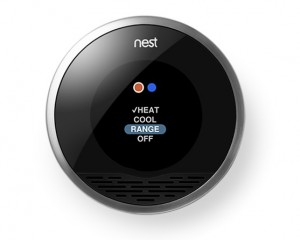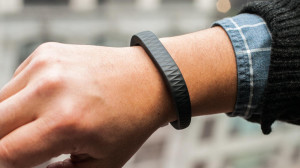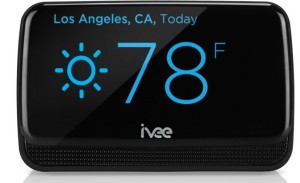OK, first an admission of guilt: I don’t synch my Jawbone UP every day (although now that my wife and I are sharing results and challenging each other, that’s subject to change). Evidently, I’m not alone: I read stats somewhere (can’t remember the source) that about 40-50% of all Quantified Self device users stop using them within the first six months.
But that’s not the big problem: that’s the fact that only a very small percentage of the population ever uses the devices at all, despite their benefits for health and fitness.
Part of the answer, IMHO, is making them sooo simple to use that you’d automatically use them (for example, I like the fact that the Lose It! app nags me every day if I haven’t entered my diet, activity, or weight), but the other factor is creating a cool factor about wearables. I read recently about a VC in Silicon Valley who always wears her Jawbone to cocktail parties because it starts conversations, but Silicon Valley VCs aren’t generally regarded as celebrities in the heartland, so I’m thinking more about sports stars.
Now there’s a Boston-area startup, MC10, that might just make that breakthrough. According to The Boston Globe, the company has a number of 1st-rank sports luminaries as investors/advisors, including former NBA star Grant Hill, hoop coach John Thompson III, Indianapolis Colts quarterbacks Andrew Luck and Matt Hasselbeck, soccer star Kristine Lilly, and four-time Olympic women’s ice hockey medalist Angela Ruggiero.
The company’s first product is the translucent, stick-on Biostamp, due to be released next year. “The device, a barely visible 2-square-inch patch, is designed to stick on any body part like a second skin and record biometric data from heart rate and hydration levels to muscle activity and sleep patterns.” It’s likely to replace the current, bulky and obtrusive devices for serious athletes.
According to The Globe, there is about a dozen companies developing similar devices for jocks.
I’ve got a big collection of ball caps (primarily those of The Team That Shall Not Be Mentioned This Year, the one that “plays” [as it were…] @ Fenway Park), and an equal number of T’s from the same guys. Obviously, fans love to bond with their fav jocks by wearing their apparel, so I’m wondering whether the advent of Biostamps and similar devices will lead to fan apparel with similar devices built in, as worn by their favorites (hmmm: somehow I can’t see comparing my caloric intake with Big Papi …).
I see a lot of guys and gals around Boston with gray hair wearing the same gear, so I suspect the same approach might be a more productive way to get seniors to wear such devices than to design ones specifically for them.
This niche bears watching!





